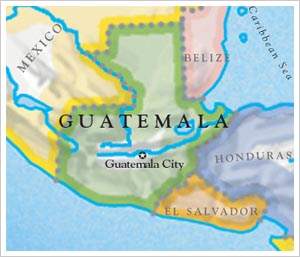Guatemala has a more complex geologic history than previously thought
 Washington, July 28 : A new analysis of jade found along the Motagua fault that bisects Guatemala is underscoring the fact that this region has a more complex geologic history than previously thought.
Washington, July 28 : A new analysis of jade found along the Motagua fault that bisects Guatemala is underscoring the fact that this region has a more complex geologic history than previously thought.
Because jade and other associated metamorphic rocks are found on both sides of the fault, and because the jade to the north is younger by about 60 million years, a team of geologists posits that the North American and Caribbean plates have done more than simply slide past each other: they have collided, and that too twice.
Jade is a cultural term for two rare metamorphic rocks known as jadeitite and nephrite that are both extremely tough and have been used as tools and talismans throughout the world.
The jadeitite (or jadeite jade) is a sort of scar tissue from some collisions between Earth's plates.
As ocean crust is pushed under another block, or subducted, pressure increases with only modest rise in temperature, squeezing and drying the rocks without melting them.
Jade precipitates from fluids flowing up the subduction channel and into the chilled, overlying mantle that becomes serpentinite.
The serpentinite assemblage, which includes jade and has a relatively low density, can be uplifted during subsequent continental collisions and extruded along the band of the collision boundary, such as those found in the Alps, California, Iran, Russia, and other parts of the world.
The Motagua fault is one of three subparallel left-lateral strike-slip faults (with horizontal motion) in Guatemala and forms the boundary between the North American and Caribbean tectonic plates.
The researchers turned to eclogite, a metamorphic rock that forms from ocean floor basalt in the subduction channel.
Eclogite dates are rarely reset, and the authors found that eclogite from both sides of the Motagua dates to roughly 130 million years old.
The disparate dating of rocks along the Motagua can be explained by the following scenario: a collision 130 million years ago created a serpentinite belt that was subsequently sliced into segments.
Then, after plate movement changed direction about 100 million years ago, a second collision between one of these slices and the North American plate reset the mica clocks in jadeitite found on the northern side of the fault to 70 million years.
Finally, plate motion in the last 70 million years juxtaposed the southern serpentinites with the northern serpentinites, which explains why there are collisional remnants on both sides of the Motagua. (ANI)